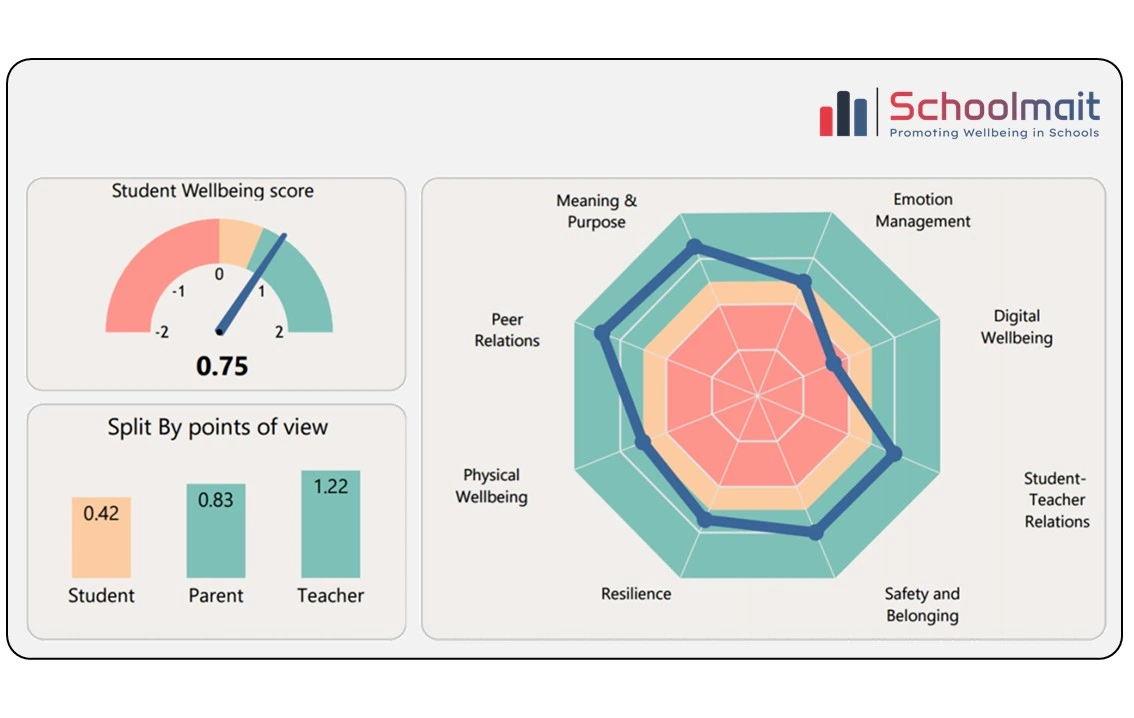How to Choose a Student Wellbeing Measurement Solution
Student wellbeing has rightfully evolved into one of the top priorities in schools worldwide. This reflects a growing recognition that student success extends far beyond academic achievement and that higher levels of wellbeing often lead to stronger learning outcomes.
As schools embed wellbeing programs into their curricula, the demand for reliable measurement tools is rising. Measuring wellbeing can offer numerous benefits as it can help educators to:
- Detect and address challenges early
- Make informed decisions about interventions
- Assess the effectiveness of interventions
- Signal to the school community that wellbeing is a core value
- Foster a positive classroom climate and support teacher wellbeing
- Strengthen the school’s reputation
- Reduce the need for costly mental health interventions later on
- Lower the risk of legal claims related to wellbeing
It's important to note that measuring student wellbeing is only useful if it leads to action. Taking action drives improvement, shows students their voices matter and helps to build trust.
"Clearly, the ultimate value of evaluations depends on their findings and recommendations being acted upon."
Key Requirements for an Effective Wellbeing Measurement Solution
The following list details key requirements and questions to ask when selecting a wellbeing measurement solution that is right for your school:
1. Holistic, Comprehensive Coverage
- Does the platform cover all wellbeing domains that are relevant to your school?
Effective tools examine multiple dimensions of wellbeing: social, emotional, physical, and digital, to provide a holistic comprehensive picture to the decision makers.
2. Multi-Perspective Assessment
- Beyond student voice, are parent and teacher views included?
- How different views are reconciled in the final reporting?
Some systems offer capabilities to gather inputs from multiple stakeholders including students, teachers, and/or parents to create a more balanced, less biased view.
3. Evidence-Based Framework
- What research underpins the tool?
- Does it address modern challenges like social media, AI use, cyberbullying, loneliness, belonging, or sleep habits?
- Are intervention ideas backed up by research-based evidence?
Tools should be grounded in current research and connect results to evidence-based interventions.
4. Ease of Implementation
- How long does setup take and is rollout support available?
- Is the survey device-friendly?
- How quickly results are available after survey completion?
Surveys shouldn’t be complicated. They should be quick to complete, intuitive, non-intrusive, and designed to minimise burden on both students and staff.
5. Actionable Reporting and Analytics
- Are reports easy to interpret?
- Do reports highlight areas for development at individual, class, year group, and whole-school levels?
Data only matters if it drives action. Reports should be clear, detailed, and actionable for school leaders, counsellors, and teachers so they can act effectively.
6. Individual Reporting
- Can reports be generated at an individual level?
Some surveys are anonymous, others non-anonymous. While anonymity may encourage honesty, the real value of non-anonymous surveys lies in individual reporting, enabling individual support and progress tracking.
7. Intervention Support
- Does the system provide intervention ideas?
- Is professional support available for intervention planning?
Some platforms link wellbeing insights to relevant resources and intervention strategies. The availability of professional support can also be useful to translate the data into action.
8. Privacy, Security, and Ethical Safeguards
- What data is collected and how is it stored?
- How is AI used and what data is being shared with the AI?
- What safeguards ensure student privacy?
Privacy is not just a checkbox, it is a foundational element that underpins the entire system's efficacy and ethical standing.
9. Age-Appropriateness and Customizability
- Are different versions of questionnaire available for different age groups?
- Can questionnaire support the languages used in school?
- Can school add questions to the survey?
Different schools have different needs, such as age groups, language requirements, or unique challenges. Some tools let schools customize or add questions to better address their specific context.
10. Real-Time Monitoring
- Does the system provide real-time wellbeing checks and alerts?
Some tools are designed to provide ongoing or real-time feedback for timely responses to emerging issues.
11. Integration Capabilities
- Can the tool connect with your LMS/SIS?
Some tools integrate into school LMS/SIS to efficiently share data between systems.
12. Cost-Effectiveness
- Is pricing transparent?
- Are extra features or users charged separately?
- What time commitment is required by school staff?
Schools need clarity on total cost and time commitments.
By choosing the right solution, school leaders can ensure that wellbeing measurement is not just a data collection exercise, but an investment in the happiness and success of every student.
